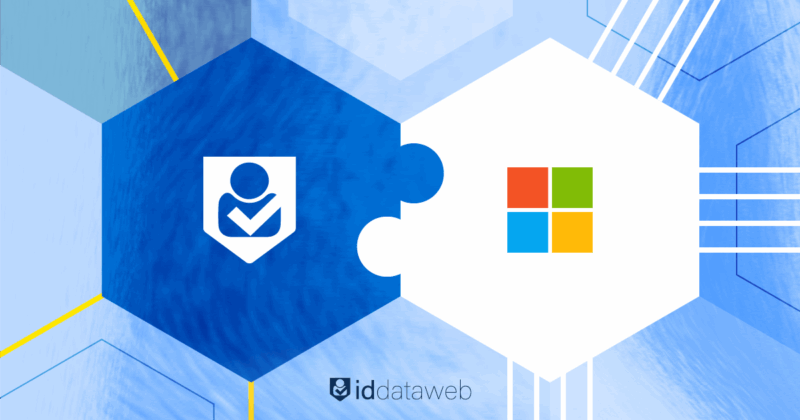Today’s organizations deal with an explosion of devices and credentials: one study found 82 machine identities for every human identity on average. Consumers, too, now use numerous gadgets – the average American owns about 16 connected devices. This vast device footprint creates new attack surfaces.
Machine identity refers to the unique identification and authentication of devices (browsers, phones, servers, etc.) in digital interactions. In fraud prevention, robust machine identity is as critical as user identity – if you can’t trust what device is on the other end, you can’t fully trust the user.
This article looks at the challenges to getting machine identity right in modern fraud prevention.
Challenges reliably identifying devices in fraud scenarios
Even with advanced user authentication, fraud operations struggle with device identification. Attackers continually find ways to appear as “new” or “trusted” devices. Key challenges include:
Emulated, cloned, and tampered devices
Emulators allow attackers to run hundreds of virtual “mobile devices,” complete with fake hardware and OS characteristics, to bypass detection. Device ID spoofing is another technique: attackers alter a device’s unique identifiers to continually mask its identity, presenting as a “brand new” device on each session. This lets a single machine create many accounts or attempts without getting flagged for repetition.
Additionally, rooted or jailbroken devices and app tampering tools let fraudsters subvert integrity checks e.g. hiding the fact that a phone is jailbroken or manipulating GPS/location data reported to apps. All these tactics erode the reliability of naive device recognition. A basic device fingerprint might think it’s seeing a normal new iPhone, when in fact it’s a virtual emulator or a tool-modded device designed to fool the system.
The challenge for counterfraud teams is that traditional signals can be faked or manipulated – they need more robust, tamper-resistant ways to tell a legitimate device from an impostor.
Privacy constraints
On top of adversarial challenges, organizations face technical and privacy constraints in device tracking. Web browsers increasingly block fingerprinting scripts and cross-site tracking, limiting the data you can collect.
Users can clear cookies or use private browsing, resetting what the system “knows” about their device. VPNs and anonymizers can hide a device’s true IP or location – one solution (used by ThreatMetrix) is to grab the “True IP” from the client side to detect VPN usage.
But overall, device identification methods that rely on accumulating lots of user data run into legal regulations and browser privacy restrictions. Fraudsters are also aware of these limitations and often “IP-hop” and rotate device settings to avoid pattern detection.
Limitations of device fingerprinting
Studies by Microsoft found that while fingerprinting does improve fraud detection models, it still can produce false positives/negatives and must be used with caution.
Device fingerprinting involves gathering dozens of a device’s attributes (browser version, OS type, plugins, screen size, etc.) to generate a unique identifier. In theory, no two devices have the exact same fingerprint, making it a useful proxy for device identity.
In practice, fingerprints are imperfect and increasingly hampered. Modern browsers and operating systems now limit the entropy of data available, specifically to prevent tracking – for instance, browser privacy features restrict fingerprintable data points. Even when a fingerprint can be obtained, it’s a probabilistic match, not a 100% stable ID. Changes in configuration (e.g. a browser update or new fonts) may alter the fingerprint. Fraudsters can also deliberately manipulate fingerprinting surfaces (using tools or VMs) to reset their device’s fingerprint on the fly.
The result is that a single bad actor can appear as many “different” devices over time, defeating the purpose.
ID Dataweb’s device intelligence solution
ID Dataweb has recognized the machine identity problem and built unique capabilities to address it. As an identity orchestration and fraud prevention platform, ID Dataweb integrates diverse technologies to deliver strong device intelligence for enterprises. This includes:
Multi-layered signals (behavior & identity combined)
Device intel in ID Dataweb doesn’t operate in a silo. The platform correlates device intelligence, user behavior analytics, and identity data together. This provides security teams with an easy-to-follow risk story: this login had a new device, coming from an IP with risky reputation, and the user’s behavior was odd – all of which triggered a step-up.
This holistic view is ID Dataweb’s strength – it eliminates the gaps between separate point solutions. As noted earlier, many organizations struggle with fragmented tools (one for device, one for IP, one for behavior) that don’t talk to each other. ID Dataweb solves that by orchestrating all signals in one policy framework. The outcome: fraud teams get a unified risk picture and response, rather than piecemeal alerts.
Comprehensive device profiling
ID Dataweb’s risk engine profiles devices, locations, and networks in real-time to assess each login or transaction. It collects device fingerprint attributes, but goes further by evaluating environment and behavior.
For instance, it looks at device reputation signals (is this device or browser instance known to a fraud database?), geolocation vs. expected location, and network info. It even checks for things like carrier data – e.g., was there a SIM swap or is the phone number ported recently – as those can indicate someone impersonating a phone.
Dynamic policy engine with risk triggers
ID Dataweb’s orchestration engine is built to take automatic action based on device intelligence. If a login comes from a completely new device or a device exhibiting high-risk traits, the platform can instantly require step-up verification or deny the action.
For example, a user logging in from a device ID Dataweb hasn’t seen before might be asked to perform an MFA challenge or re-verify their identity. Conversely, if the device is recognized and trusted, ID Dataweb can fast-track the user with minimal friction.
This adaptive response improves security without sacrificing UX – suspicious device => block or challenge; known good device => smooth pass.
Device binding and trusted device management
ID Dataweb enables organizations to leverage device binding by linking device identities into the authentication flow. The platform can generate or use a device fingerprint/ID and treat it as a first-class factor in policies.
Over time, it builds a memory of devices per user. So, if suddenly a user’s account is accessed by a device that’s not one of their usual “bound” devices, there’s an immediate red flag. By the same token, ID Dataweb can maintain “negative lists” of devices – for example, devices confirmed to be fraudulent or associated with prior fraud can be automatically blacklisted from accessing any account.
This is where their consortium connections help: through integration with networks like LexisNexis ThreatMetrix, ID Dataweb leverages crowdsourced device intelligence from 5,000+ global companies to identify suspect devices in real time. If a device was used in fraud at one site, ID Dataweb’s integration can know about it and block or challenge that device on another site – giving fraud teams the exponential strength of a networked defense.
Orchestrated step-up authentication
When device or risk signals warrant, ID Dataweb can seamlessly orchestrate a variety of verification steps. It integrates with 40+ verification providers (from document upload to biometric selfie to one-time passcodes) across hundreds of data sources.
This means if a device fails the trust test, the system might invoke, say, an out-of-band phone verification or a government ID check to further authenticate the user. This capability is unique in that it ties device risk to identity verification actions automatically.
How this all looks in practice
Suppose a fraudster tries to log in to a victim’s account with stolen credentials. They’re on a new device, using a different browser in an odd location.
ID Dataweb’s engine instantly notices the device is not one of Alice’s usual devices and that, say, the IP is coming through a VPN known for fraud. It might also detect that the device fingerprint is similar to ones used in other fraud attempts (consortium data). All these signals push the risk score high. The login is challenged – perhaps a fingerprint or Face ID via Alice’s phone, or an email code. The fraudster fails to provide that, and the attempt is blocked. Alice might even get a notification of an attempted login.
Meanwhile, a legitimate user Bob logs in from his regular phone; ID Dataweb recognizes the device, sees no risk, and Bob enjoys a seamless login with no extra steps. This illustrates how ID Dataweb can establish trust while fast-tracking safe users.
Minimize friction.
Maximize security.
Takeaway
As fraud evolves and the number of devices continues to skyrocket, mastering machine identity has become imperative.
Encouragingly, the industry isn’t standing still. New technologies like device binding with crypto keys, mobile SDK intelligence, mutual TLS, and PKI credentials are raising the bar for fraudsters by making device authentication more reliable and resistant to spoofing.
The machine identity problem is solvable, but it requires investment and a strategic mindset. Fraud analysts and identity architects should collaborate to bake device awareness into every layer of security – from onboarding to login to transaction monitoring. SaaS buyers evaluating fraud prevention solutions should ask: how does this solution identify devices, and how does it handle an attacker trying to fake one?
The solutions that leverage device cryptography, global intelligence networks, and adaptive policies will stand out in their ability to actually stop fraud, not just detect it after the fact.












